Merch Informer Case Study – A Merch By Amazon 20k Per Month Blueprint
Todor and I started Merch Informer just around 6 months ago. Ever since the beginning, we have been Merchants ourselves, practicing exactly what we preach on how to find successful designs, dominate markets, and crush the competition. Month in and month out, we are making more profit from Merch by Amazon and the multiple integrations that are now available for Amazon merch sellers.
We grew from early adapters of Merch by Amazon to selling the first Merch business.
Through a lot of hard work, we scaled up operations and now clear upwards of $20,000 per month through the Merch by Amazon program.
Simply put, we know this business and know what you need to do to succeed. Once you have a successful template on how to find and creating winning designs, scaling up is incredible easy! After months and months of people asking how to find and deploy winning designs, we finally decided to put out this case study.
Today we are going to go over one of the methods on how to use Merch Informer to identify these opportunities and how we actually made money within the first week of having the shirt live.
This process will take you from beginning to end with the listing being live on Merch by Amazon and making you money day in and day out. At the end, you will see that all you need to do is rinse and repeat to bring your Merch by Amazon account into the 5 figures a month range. Let’s do it!
The Research Process
Researching a niche that is doing well is absolutely the most important aspect of doing well selling on Amazon. If you are creating products that no one is searching for, you will end up feeling frustrated and wondering why you are not making sales.
Improving the research process is the entire reason that Merch Informer was formed in the first place!
To begin with, we know that Amazon is a big data company, and that they usually recommend or auto suggest keywords based on what you type in the search bar to help direct you to products they know you are more likely to buy. Since we know that Amazon is optimized, we can really take advantage of these auto suggest keywords.
To start off our research process, we log in to Merch Informer and head over to the keyword finder. This module is to help you find the auto suggest keywords but you must enter in a seed keyword. It is VERY important that when you enter in a keyword here, it is open ended and can be finished with a lot of different endings. If you are putting in a seed keyword that is not open ended the keyword finder will show you the last successful search and where a lot of people are getting tripped up.
To begin our search, I simply type in “im a”. Now I know this is missing an apostrophe, but this is probably the best way to bring up a lot of different keywords that Amazon might recommend.
As you can see from the next screenshot, we have 49 results. From these results, there are actually some awesome keywords in here:
When I was going through all of these, one of them caught my eye because it was a play on words.
“im a big dill” is one of the auto suggest keywords which I thought was pretty funny in its own unique way. I THINK we might be able to use this. Since I want to be able to go back to this suggestion later, I click on the heart for the suggestion, and then at the top click on the “add to favorites” button. This will keep that keyword/phrase in your favorites so you can go back and check it out later.
From this same page, I want to check to see if that keyword has any EXACT matches on Merch. To do this, I click on the score icon. Remember that this is only going to show you the competition score for that exact keyword at this stage.
What this is doing is checking Amazon to see how many people are using that keyword/phrase as an exact title for their shirt. As you can see, not many people at all are, so we come back with a score of A.
So far, everything is looking good. A lot of people from this step on are a little bit confused so let me show you what we do.
We know that this keyword has some buyers intent and that Amazon is recommending it because they know sales occur there. What we do NOT know yet, is just how well this keyword is actually doing. We want to be able to nail down if this is something we want to actually create a shirt around.
This is where the product search comes into play. The product search is going to bring up the best 100 best selling shirts by keyword and rank them in order of top tier category BSR. Currently, this top tier category BSR is not being shown on Amazon and Merch Informer is the only way to see it and estimate sales.
Head over to the product search and enter in the keyword and category. Since we are doing Merch by Amazon, we will enter in the keyword “im a big dill” with the category “Merch by Amazon Shirts”.
Click on search and see the results!
Here was the results when we were putting this case study together:
There is a few things to take note of here. The first is that the sales rank and the estimated monthly sales. These are just screenshots in time. BSR is changing all the time and so are the monthly sales. We use both of these as a single screenshot in time to judge if we should go into this niche or not.
NOTE: Our entire strategy is to go for long term business and evergreen niches. We play the numbers game around here. If we can have 1000 shirts selling 1-2 a month, we think that is a lot better than chasing trends all the time.
From this screenshot, we can see that there is 1 shirt doing pretty well in this niche but there are also a few others that are getting a few sales a month. This is EXACTLY the type of niche we could enter and dominate with a better design. Some of these designs are clearly from an amateur. We are making progress at this point.
At this point you have probably decided if you are going to go for this niche or not. In our case, we are going to attempt to break into this niche. Just to make 100% positive that this would be a good idea, make note of the keywords that the shirts are using. In our auto suggest keywords, we came up with the keyword “im a big dill”. From looking at WHAT is selling, we notice that the biggest theme is the keyword “I’m kind of a big dill”. Notice the difference there? It is subtle, but we want to use this.
Now that we have the main keyword we are going to use because that is what the competition is using, run it through the Advanced Competition Checker to see how many people are you are going to be up against. We have determined by the BSR that this niche has demand, but is it super saturated? Let’s find out!
Look at that, barely any competition at all!
Before we get a design made, there is one more thing we want to check on and that is if this saying has a trademark on it. We want to make absolutely sure that this is safe to use. We can run this check from the product search itself after the results are up or you could have ran it from the keyword finder when looking at the results.
As you can see, we are good to go! This term is not trademarked, and we have the green light to forward some information to your designer.
Getting Your Designs
What we usually like to do is add the designs in the niche to our favorites and download specific options such as the URL, a high resolution image, or the keyword for our designers. You can pick from any of these:
These will then download to an excel spreadsheet that you can fire off to your designer.
At first you may take a look at the designs that are ranking and think to yourself “hey, I could come up with something that could sell”. Well, here at Merch Informer, we thought the same thing!
It became clear to us VERY quickly that since we are not graphic designers, this was just not going to cut it! We preach all the time that in order to crush a niche, you need to have the best design out there. We outsourced this design to a designer, and they came back to us with this:
They even provided a mockup that looks amazing:
As of writing this, our design is the very best in the niche by a long shot.
Uploading Your Shirt
The time has come to upload your design to Merch!
The first thing you are going to do when uploading your merch design, is you need to pick some colors and pick a price. For the colors, pick what looks good on the shirt! You may know that the best selling colors come first, but each design is unique. Pick the colors that look best with your design.
Price. Everyone argues over the price. Should you price super low to get sales? Should you price high to look like the premium option?
We have priced all over the place and ALL methods on price work! Seriously, there is a market for almost any price point but what we found works well is pricing somewhere in the middle. If you make absolutely sure you have the best design (like we did!), then you can price in the middle or slightly higher and still ensure you get sales.
In order to see what other people are pricing (we price for the market, not a made up number), we go back to the product search and notice this at the top of the search for our main keyword:
From what you see here, the lowest price is $14.95 and the highest is $19.99. You can pay attention to the average, but for this shirt, we are going to price it somewhere in the middle and then raise prices down the road if the shirt is doing well. We decided to price at $16.99 and on an anvil shirt. This will give us a great margin with room to bump it up later if we get some reviews going.
Title/Bullet Point Optimization
You want to get your main keyword in the title and variations of the keyword in the bullet points (maybe the main keyword again). To do this, there are a few techniques that can be used. The first is to go back to the product search:
Just look at the competition and look at their titles, bullet points and descriptions. You can cherry pick the best keywords from the listings that are ALREADY selling.
Another way you can make your listing a little bit better is to use the Synonym Suggest tool from our listing optimizer module. Since this niche is super small and the keyword are pretty easy, we will just stick to checking out the competition.
This is what we went with:
- Title: I’m Kind Of A Big Dill Funny T-Shirt Pun Tee
- Bullet Point: Do you know that one person around that thinks they are funny and are always dropping hilarious puns? Everyone will love this big dill tee, especially for those people where pickles are life. Wear one today and bring out the laughs.
- Bullet Point: This I’m Kind Of A Big Dill Funny T-Shirt makes a great gift for friends and family. Grab this big dill shirt as a gift for someone close to you.
Notice how we use variations of the keyword in the bullet points but also the main keyword in the title?
Here is how the listing ended up looking on Amazon: https://amzn.to/2JXfvFk
If you want to read a little bit more into the optimization process, we have gone over that in the Amazon Merch SEO guide.
Protecting Your Account
The very last step we need to do before we wait for organic sales OR move on to marketing is make 100% sure that our account is safe from anyone trademarking this phrase.
We have seen over and over again where someone uploads a shirt that is selling well for them, but months down the road, that phrase gets trademarked and removed from their account. Even though they uploaded it first, they are now stuck with a strike on their account. Since we do not want you to lose your account over something small like this, we released the trademark alerts module which is super valuable.
Head on over to the trademark alerts and enter in the saying/phrase that you want to make sure is checked up on.
We automatically check these once a day. If you are just adding the phrases, you will need to click on the “check trademarks” button at the bottom there which will check the phrases that have not been checked within the last 24 hours.
As you can see, the phrase is currently safe to use. This will update every 24 hours so make sure you are checking back to see that nothing has changed.
If one of the sayings that you are using HAS been trademarked, it is time to take action before you get a strike on your account. This can keep you from getting banned and losing all your hard work!
Wrapping It Up
Alright, now that we have gone over exactly how to find niches that are selling and come to market with something better all with using Merch Informer, there is just one last step and that is to make sales. You can either use any of the Merch Marketing techniques that we have gone over extensively, or you can wait for organic sales. We are optimized for organic sales, but marketing your own merch is the fastest way to see results! Since we are selling thousands of shirts each week, we are simply going to leave this shirt for organic sales and see what happens. This case study will be updated in a few days to reflect what has happened.
UPDATE (1 day later)
We honestly did not expect to see results this fast! This niche is not extremely popular but as we have shown you there is a bit of demand here, and the entire goal is to go into evergreen niches that will sell at LEAST a few designs each and every month. This has proven to be the absolute best way to scale.
Well, literally less than 24 hours after we uploaded the shirt, it looks like we have our first sale!
Here is what the BSR looks like on the Amazon page itself:
As you can see, Amazon is currently showing BSR (Best Sellers Rank), as sub categories which are absolutely useless and really do not give anyone a sense of how a product is actually doing.
In order to get a better idea of how this shirt is doing, you can run our main keyword through the product finder module in Merch Informer which will give you a much clearer snapshot of how we are doing:
BAM!
Just like that, we are the best selling shirt out of all the “I’m Kind Of A Big Dill” designs. Pretty easy to see why!
- Best Design
- Priced Competitively
- Optimized Bullet Points
- Small but in demand niche
It really is that easy. There is no need to complicate anything. The entire process takes us about 5-10 minutes to go through everything when we are working on coming up with other designs. From there, we get 100s if not 1000s of these, and put them up on Amazon.
Let’s do some quick math!
If we sell 5 of these a month (very conservative estimate), at just over $5 commission each, that is $25 dollars a month profit for this design. Month over month you will make that as profit if you make sure you optimized and came to the table with the best design.
$25 does not sound like very much at all until you realize how EASY the entire process is, and that if you just did the same thing 1,000 more times, that $25 a month turns into $25,000 per month.
There is no secret sauce or special secret. We crunch the numbers, run the math, and use Merch Informer to find these opportunities to allow us to scale easily and efficiently.
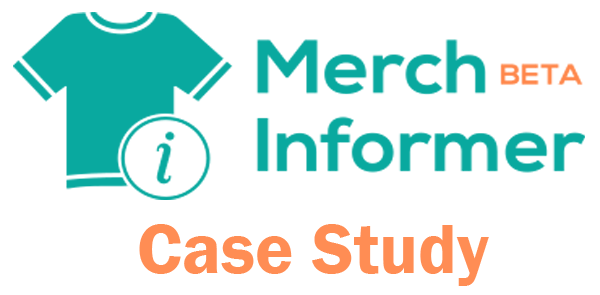
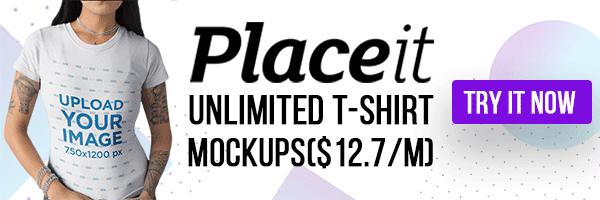
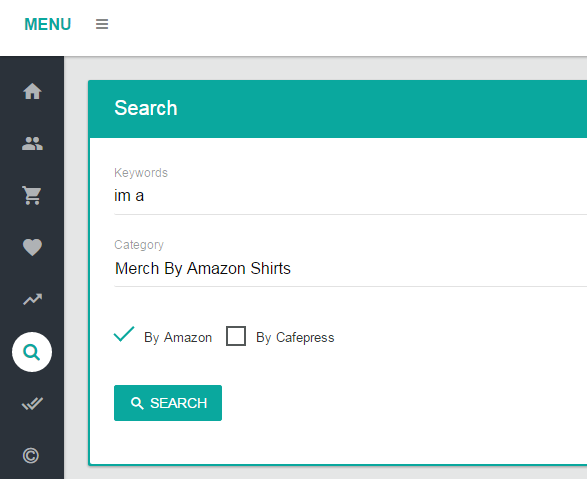
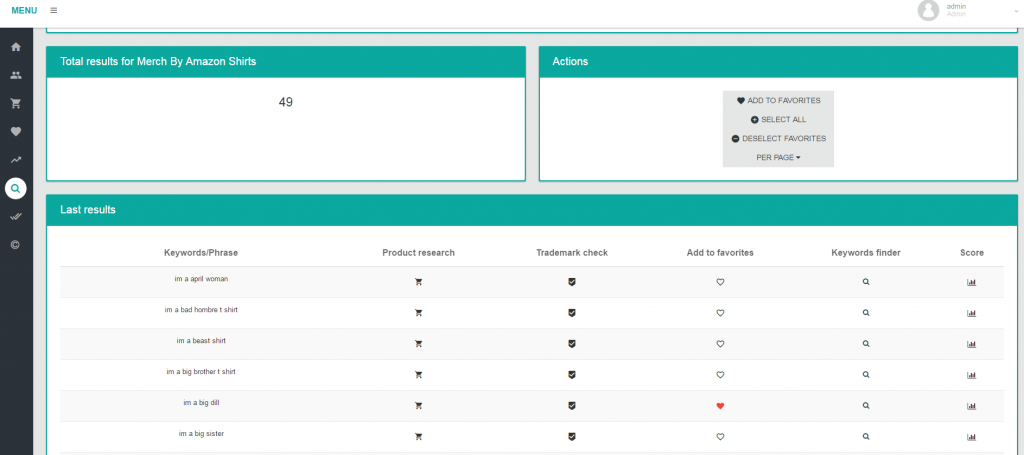
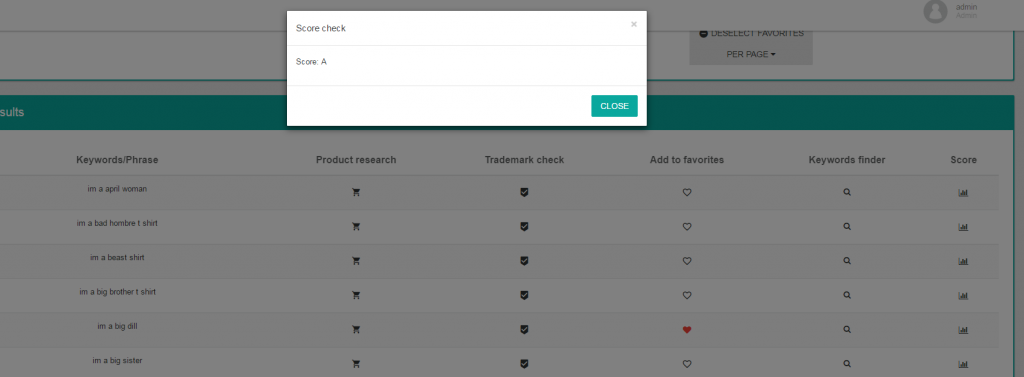

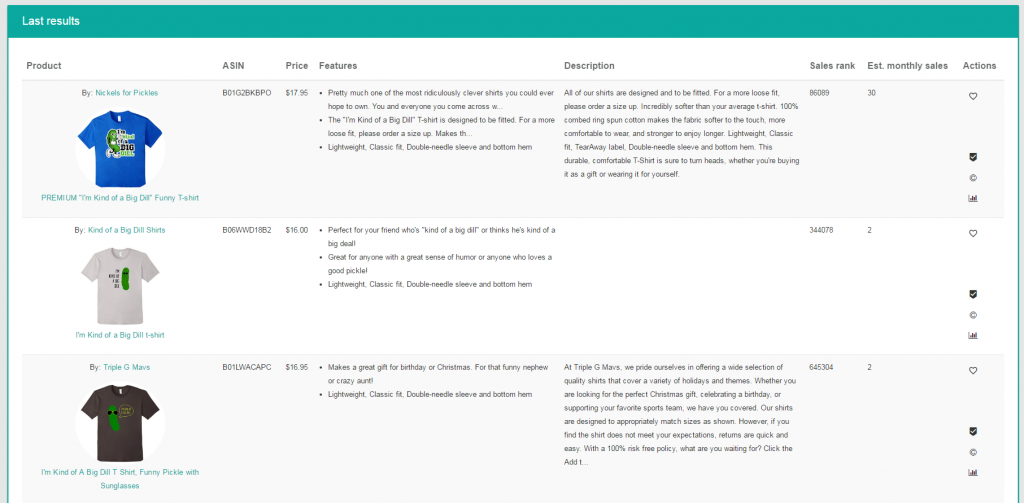
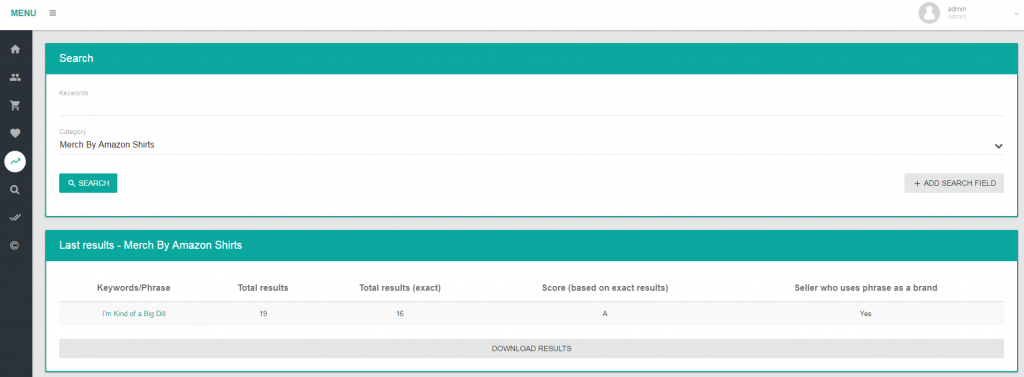
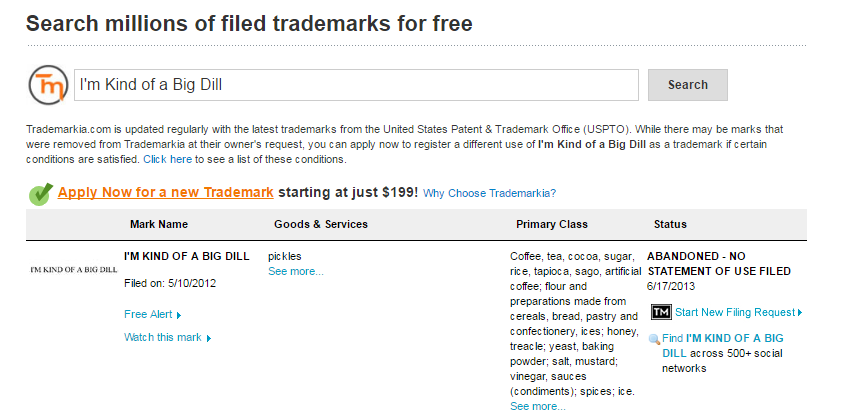
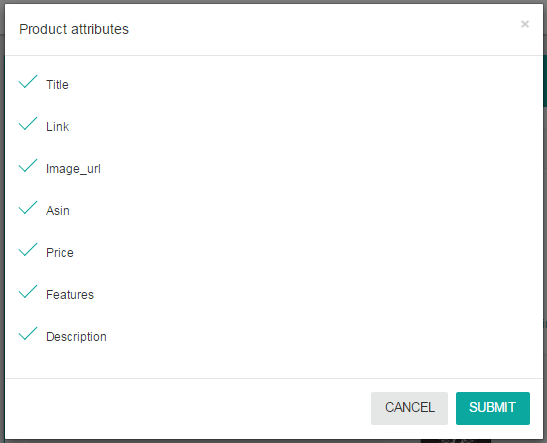
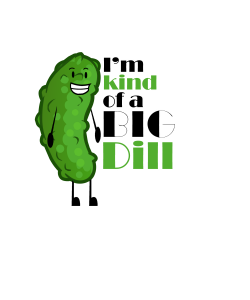
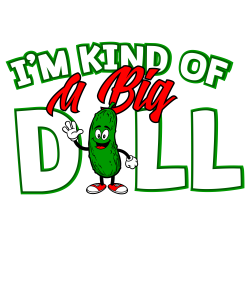
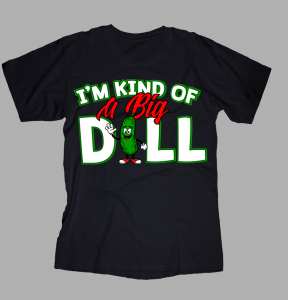

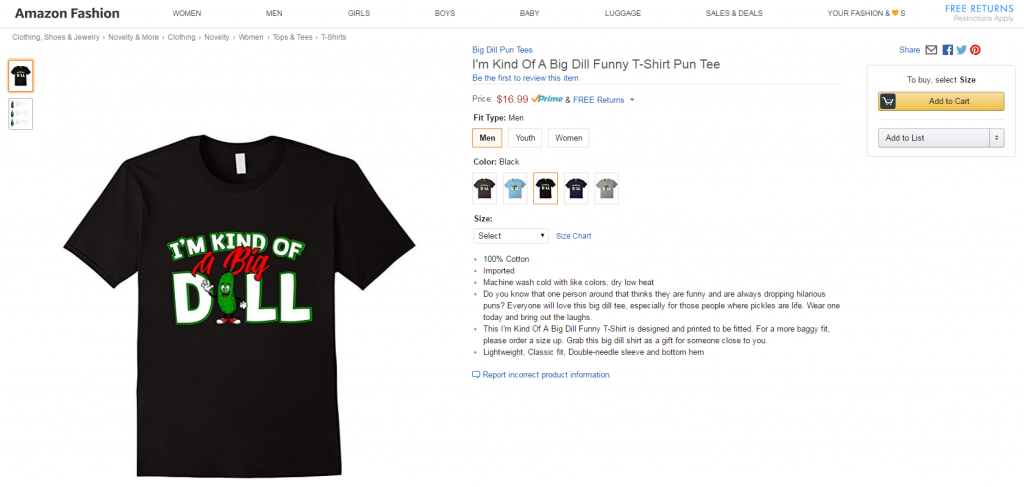



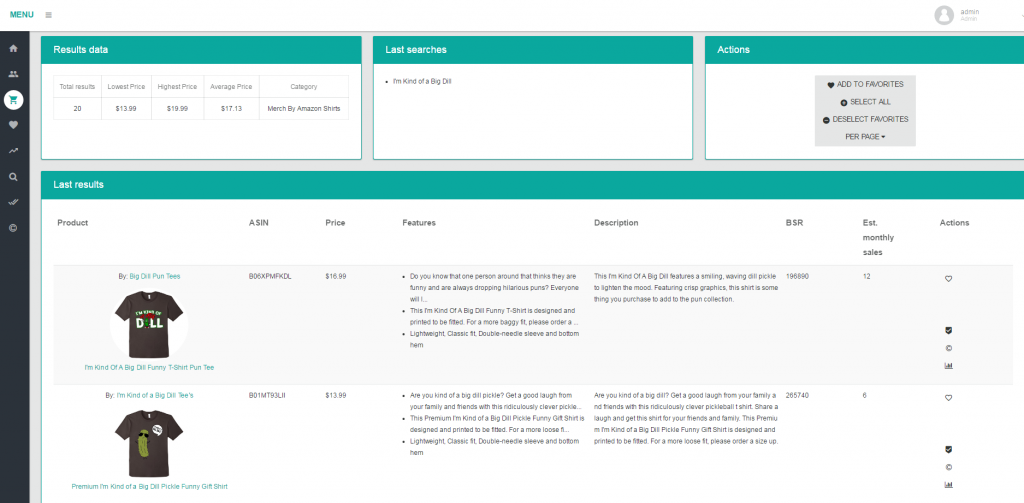
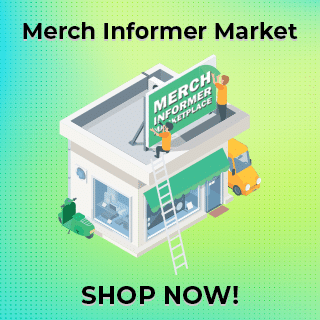
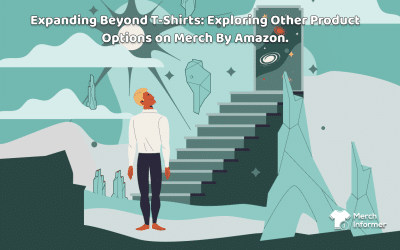

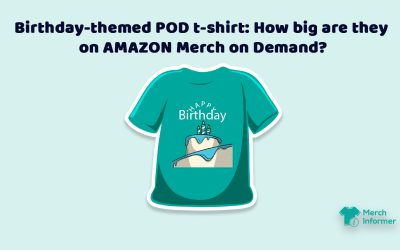
Great stuff as always Neil, thanks!
This is excellent info Neil, very useful. Thank you for all you do!
Thanks Neil! This is exactly the guide I needed! Great work!! 🙂
Hi Neil,
Thank you for such an excellent post, just what I was looking for.
Can you explain in a bit more detail when (and when not) to follow a particular design idea when you’re doing your initial research.
Is there a rule of thumb you use when looking at the data?
How do we know how many people are searching for this slogan?
When are the numbers of competitors too high to proceed any further?
What if the number of sales are high but with a lot of competition but you think you could do a better design…would you proceed?
When do you use the rating of A or B, etc and what rating means stay away?
Any other tips on the GO/NO GO process or deciding to pursue a design idea?
I think this is where a lot of people (including myself) are making mistakes and chasing the wrong slogan, design or niche and it doesn’t sell so It would be great to really understand your decision making process here.
Thanks again
David
My personal rule of thumb is that I want there to be demand and that I can come to market with just as good or a better design. Since I have a ton of slots and am taking advantage of all the integrations, I will throw everything up that I can. You will not be able to see how many people are searching on Amazon for a specific slogan because Amazon does not tell anyone this. The “tools” that do, are just guessing based on google data which is not even close since 60% of buyers start their searches on Amazon anyway. I tend to try and keep competitors to around a few hundred or less, but like I said, I am mainly looking for niche demand. If you are looking for easy to rank niches, anything below a B I would look elsewhere. If you have design skills yourself, I say go for anything which people are buying. Niches that have a bit of demand should be pursued.
Can we apply the same principle for the teespring intregation? What should we put in the category when we are searching in merch informer? Are teespring shirts and houdies belong in Merch by amazon category? Thank you
Same principle really applies to all the different integrations. Find niches where there is demand but not very many products, and put out the best designs (rinse and repeat!). I would search the merch by amazon category (anvil shirts), or just the t-shirt category which is everything else. We find that using those two usually gives us the most ideas for clothing and then can use that data to put them on different products.
Yeah that’s what makes sense. Thanks
Another quick questions, do you suggest we search for keywords in the category merch by amazon or tshirts?
That is what we usually do!
Neil are you already having success with Teespring and hoodies? I am sure Merch is still #1 revenue for you, but I wonder if you have been able to make a big dent with Teespring so far? Also, I just started using Merch Informer this weekend and got my 1st 2 designs up on Merch yesterday. Thanks!
The Teespring integration is actually already seeing some very healthy sales and our inventory is not even fully uploaded. I think down the road this should bring in a great chunk of money right along side merch by amazon.
Hey Neil, how would you say Teespring integration sales compare to mug sales through Teelaunch/Shopify? I’m still doing both, just curious which you think would have more potential down the road.
Teespring sales are healthy, and we are selling a lot of sweatshirts. They really are two different marketers though so not really sure they can be compared. I do appreciate the level of control I have with Teelaunch/Shopify but this is only for people who can 1: pay the monthly fee for seller central, and 2: deal with customers. Some people want it as easy as possible, and that is where Teespring wins.
What does healthy mean? 10%-20% of your merch sales? What’s your inventory size on Merch? 2,000 designs? 10,000 designs? Any details would be helpful
The program has only been out for about a month for the very first people who were accepted so of course they are going to be a lot smaller than Merch. We are seeing daily sales with Teespring right now and our inventory is over 1,000 designs.
Are you receiving any sales from Teespring via their marketplace as well? Which is stronger, Amazon or Teespring marketplace. Thanks
I started about 1 month ago with Teespring and have only made sales via their Amazon integration. I know there are people who are getting sales via the Teespring marketplace, but I am a lot more focused on optimizing their listings for Amazon.
Making 20,000 from Merch, a program that just started less than two years, goes to show how taking action, spending a little money, and taking the time to do research can actually pay off.
Keyword research and market research are important factors to consider. As mentioned in a previous post, equally (or more important) important is the marketing of the t-shirts or t-shirt business.
Neil, you describe revenue for your Merch t-shirt business but there are some missing blanks (that if answered can point a better picture) as to the success of actually earning money from uploading shirts on Merch. If you can provide some info on the following:
1) Is your revenue based on only 1 Merch account, or multiple accounts?
2) Breakdown of monthly expenses to achieve that 20,000 per month? (Providing some info on this will help out people just starting so they know what it actually takes in terms of money to start and build a business.)
3) If making 20,000 per month, have you found a process (or system, framework) that you feel comfortable that you could use if you were starting as a beginner with Merch?
I have pretty much answered the majority of these. I pay $4 per design and the process that I am using is this exact case study that we wrote. This is literally the entire process we used to grow.
Neil. What kind of depreciation are you seeing on designs? I.e. if the ‘Big Dill’ tee sells 5 tees at $5 – a month now… would you expect, with ever increasing competition, that the it might be selling 3 tees at $3 in 6 months time? In short. if you stopped making more tees now… how much might your income drop each month?
Really do not expect to see any depreciation actually. There was a span of a few months where not a single shirt was uploaded and earnings kept growing month after month. If you have the best design out there AND are getting sales, you will start getting reviews. Once you have reviews on Merch shirts, they are going to be MUCH harder to compete with since buyers love good reviews.
The BSRs I see is a lot higher for the shirts in this demo. For example, your shirt is almost 700,000. Have they increased since your post or am I looking at the wrong number some how?
They fluctuate based on sales. BSR never really stays the same, it goes up and down depending on sales. That being said, the entire process is exactly how we do things to grow our Merch Business.
Neil I’m seeing a lot of results come up where a keyword that ends with “shirt” or “tshirt” gets an A rating. But if I take off the “shirt” part it gets an F. For example “I love Arizona shirt” A rating and “I love Arizona” F rating. Are the keywords with “shirt” at the end worth pursuing or do you end up basically competing for the “main” part of the keyword? Also, where would you draw the line competition wise, at B, C or D?
Go for the full phrase. If you were a shopper and were looking for an article of clothing, you would probably type in shirt at the end of the phrase right? Try to put yourself in the shoes of a buyer. I would say A and B should be pursued but if you have the slots available, I go for anything that has demand!
“From this screenshot, we can see that there is 1 shirt doing pretty well in this niche but there are also a few others that are getting a few sales a month.”
If there were 5-10 shirts selling on average 2 per month. Would say that niche has demand? Or are you only looking for niches with at least one shirt at the top with decent sales 10+ per month, and some other shirts selling 1-2?
I would say say that niche has demand. I think both actually represent an opportunity. The first your goal would be to hit a few sales a month, where the second, you might land somewhere in the middle of the two numbers or at the top if you do it right. If you can pull a sale or two a month from a single shirt, you can make a ton of money just by scaling to hundreds if not thousands of designs.
Hello Neil… thanks for all your terrific info. When I put the phrase “I’m kind of a big dill” into the keyword search I get this response: “The phrase you have searched for doesn’t yield any suggestions for the selected category. Please try another phrase.” Why do I get no results on this phrase?
The keyword search module is based on Amazon auto suggest. To ensure you get a lot of keywords, you need to type in a seed keyword that could have a lot of different endings. Think of seed keywords such as “I love” “I’m” “I am” along those lines. This is similar to when you are Googling something and there are a lot of suggestions on how you could finish the word you are typing.
Hi… I tried several. Here are samples of phrases that came up with no results:
this woman is
what do i
walk like a
this mom is
when can i
more of a
where is the
happiness is
tractors are
Seems like any of those should have come up with at least one result but I get nothing. Any suggestions? Thanks
There are a few things you can do. First, make sure you are checking the CafePress box as well. This can bring up extra keywords that are already on Amazon. Second, a lot of these do not have any auto suggest keywords on Amazon for the category you are looking at. You can check this by going over to Amazon yourself and putting in the beginning of some of the phrases you are looking at and see what categories they are in. For example, your “tractors are”. If you go to Amazon and check that, there is nothing in clothing at all. The final thing you can do is enter a little less of the keyword. For example here instead of “this mom is”, try using “this mom” and see what comes up.
Amazing post! This is why I’m a customer. One quick question though, how can the CafePress feature fit into marketing, say, mugs? There are way more results for mugs on there as far as keywords than there are for Amazon. Sometimes there is parody, but not often. Would you assign any value to the results from CafePress? Did I explain that well enough? Thanks!!
We put the CafePress box into the Keyword Tool module because they have their own auto suggest algorithm and they actually sort of specialize in mugs. This allows us to pull up even more results than you normally would get on Amazon. You can then run these through the product search and see how well those specific phrases are doing on Amazon. If you are able to pull good keywords from CafePress, then use them to see if they have demand on Amazon. If they do, design and upload!
That’s awesome. We wouldn’t have the keyword being searched on Amazon but could potentially be found organically in the long tail, is that what you’re aiming at?
Sort of. The keyword certainly COULD be showing up on Amazon and most likely is but Amazon just is not recommending it as an auto complete keyword. After you find keywords (no matter where you find them), it is important to see if they actually have demand. Toss them into the product finder and take a look, and then pick what you want to do from there. Just gives everyone more choice as well as expand the keyword lists.
Got it, thanks!! I wonder what it takes to show up in autocomplete? They don’t publish that, but it would be cool to know.
Hi Neil, This is a great post! it’s actually helped me as a new user to understand the way merch informer is working.
however, I’m wondering if there is an easy way to find a demand for a niche and not only for an exact phrase. If I will find a good niche I can find for a few good phrase to go for, maybe even some that are not on merch….
In order to do this, take your niche and enter that into the product search. This will bring up the best selling products for that niche. You can judge demand by looking at the BSR. From there, take a look at the top 100 products for each niche. Look at what keywords they are using. This is where you can get your keywords/phrases from. Then take THOSE phrases and run them through the product search again (looking for BSR), to see if there is individual demand there and you will know what you should go for or not.
hi Neil, when you mentioning below, are we looking for return result (something found) or no return result (zero result)? thanks.
“Then take THOSE phrases and run them through the product search again (looking for BSR), to see if there is individual demand there and you will know what you should go for or not.”
I am typically looking for results. I want to see results that are actually selling. This sends a signal that people are spending money in those niches.
Great stuff! I see it now has a BSR of 64492 – is that about 44 sales a month?
I have been searching far and wide for an answer to this question, but it is a very simple one. For the BSR – are we looking at ALL of Amazon, or specifically Novelty & More > Shirts? As of right now, your Big Dill shirt has a BSR of #1,816,967 in Clothing, Shoes & Jewelry, while #83203 in Novelty > T-shirts.
Sorry for the newb question 🙂
You want to be looking at the top category BSR so you are correct. There have been thousands of people who have seen this case study at this point so competition has increased.
HI Neil. I know you’ve answered a lot of questions here. Sorry if this has been covered.
When doing keyword searches i’m coming up with plenty of options where there is a competition score of A with shirts selling estimated 2 per month (it seems like it always 2 on these low competition/low sales results- ie not 3 or 1 for example. Like you say – 1 or 2 sales per month x1000 is fine by me, but wondered if this wasn’t sometimes a way for the algorithm saying ‘this shirt may have sold once in a blue moon based on BSR’ rather than it always being a reliable indicator that the niche is selling 1 or 2 per month.
This can absolutely be the case. The way we generally get around this is by simply adding these shirts to our favorites (We like to make a specific category in MI specifically for this), and then watching them over time. If they are constantly selling a few (aim for a few sales a week), then this is a good indication you might want to go into that niche. If you add it to the favorites list and check back a week or so later and it keeps falling, then this might be an indication that it sold once in a blue moon.
This was my question too. 90% of my results indicate 2 per month sales with a rating of A. Will there be an update to make this more accurate?
This is because those terms are “long tail” keywords. You need to take a look at the top products selling in that category but it might mean there is not as much demand there as you would think. The score of A simply tells you that the keyword should be easy to rank if you were to create a design around that topic based on the amount of other sellers, but if there is not as much demand as you would like by the sales estimate, you might want to keep searching.
Your website and advice is rad. I’m an illustrator from New Zealand and have been seriously researching how to get my t shirt business off the ground. I think I have struck gold here with your advice. Now I just need to execute(@garyvee) and follow everything you have laid out. Thanks so much.
Hello Neil.
Im currently uploading designs, but the process is tearing me apart. Its simply too time consuming.
Even if im using excel.
Do you use a VA for uploading?
Thanks.
Not for Merch by Amazon, no. Put on some good music and realize the more you upload, the more you make!
What about shopify+amazon then? Do you use a VA there for uploading?
Yes!
Nice thanks. Im thinking of hiring one for the entire process of uploading for shopify+amazon.
Id be interested in a blog post about it, if you can make it happen.
Great article. It was very easy to follow along with as I did my first bit of keyword research using merch informer. Do you have any tips for finding a designer? I’m thinking of using fiverr but am open to other suggestions before I hop down the rabbit hole.
I would stay away from Fiverr, especially with the new rules in place with Merch. Will be writing on this in the near future so stay tuned! (I use upwork all the time for this type of work).
Thanks for the response and I’ll be on the look out for that article.
Can you tell me why you would stay away from Fiverr? What new rule are you talking about?
The new copycat rules. Fiverr sellers like to sell designs to multiple people.
Neil – thanks for always answering our questions. Your dedication to your customers/users is why I am such a strong advocate for Merch Informer. So I have a question about the new copycat rules. Your example here of looking at the I’m kind of a big dill” design and getting made better – is that dangerously close to copy catting under these new rules? Do you still think this is a viable technique? Thanks
I think this is a very viable technique. If you look at the images above, you will see the NICHE is the exact same, but the design itself is drastically different and overall (in my opinion), a drastic improvement on the concept. The Merch TOS even says you can use the same elements, just not the same design. I feel like it has been altered in a large way and gives the customers a better choice.
I guess I have a to learn when it comes to IP. For instance what about the term LGBT? Merch Informer tells me that this term is trademarked. But when I check TESS it doesn’t appear to be trademarked. What am I missing? Have you ever thought about doing a webinar on the subject Neil?
We show marks as unsafe if they have a registration and serial number. This is more of an alert to go check out what category they are in and take a deeper look. I actually a did a video explaining how that all works here: https://www.youtube.com/watch?v=N3dnS3sfFaI
Hi Neil.
I would like to ask you if MI shows results based only on t-shirts uploaded through MBA? If I use another integrations can I use MI for my research? I am asking about it because the t-shirts from teespring or shopify will be uploaded to all amazon and if to check results for product search from MI when you put category MBA or just T-Shirt – you will see a different results. Can I use this results ( from category ” t-shirt” for teespring or shopify) in double check in Keyword search or Advanced competitor checker? Will it reflect the real competition based on this keywords or ” saying”?
Do the t-shirts from MBA uploaded to general site (amazon) not to the some special part of amazon.com?
Yes. You can pick the t-shirt category which will show you everything else besides MBA Anvil shirts so you can get an idea of all the other competition you may be up against.
Hi Neil.
Does it make sense if will use for teespring integration only MBA t-shirts category or I have to use just “t-shirt” category?
You can use either one. They will both work. I would suggest looking at both of them at the same time.
Hi Neil. I have one question. Why I cannot open the links for some t-shirts from favorit module? It says that amazon can’t find this page. What does happen with t-shirts?
Thank you .
This will happen when Amazon removes a shirt for infringement.
Hello Neil.
Do you know what’s the average price for VA to do data entry for example 100 products? (upload to shopify through teelaunch and then to amazon with excel)
I really do not know off the top of my head because my VA’s do more than just that. You could easily put a job out on Upwork and see what you get back!
Hi Neil. I would like to ask you how to consider this kind of result from advanced competition cheker if I put phrase and I have: Total results 159,Total results( exact)-0, score A and no using as brandname? How to consider this info?
Thank you.
Take that term and put it into the product search module. Are there sales in that niche? If so, go for it!
Hi Neil. I did it ,I put this phrase into the product search module. There were sales in but 0 products with the exact phrase,so it looked like different theme.. Is it ok ?
Not really sure if its a different theme it would be best to open a ticket at our helpdesk with the exact word and what you are trying to do and someone will take a look.
Ok,thank you for your answer. I’ll try.
This is very helpful! Thank you so much.
I wondering if you could tell us a little more or some helpful hints where you come up with the “seed” keywords to start your search? Is there a process you grow to to find them?
This might help you that we recorded a while back: https://www.youtube.com/watch?v=kJJDms_rhOA
Neil,
What would you consider “low” competition?
How many “Total Results/Total Results (Exact)” are you looking for? Under 50?
Score is around A & B.
Under 100 is pretty good, but under 50 would be even more idea. If it is around A and B but still getting sales, I would say go for that niche for sure.
How did you know that the design you got from your designer was free for commercial use? I assume that the designer used a vector, that he probably got with his subscription, but that doesn’t extend to you, so how are you selling these shirts?
Get your designer to provide links to all aspects of the design when they deliver it to you until there is shared trust.
hi ,
i want to outsource my designs. since i am not a designer myself. can you guide me further how will i know that the links are exclusive to me? also does these link mean the vectors they use ?
If the designer sends you links to the design elements that they used, you can check to see if they are available for commercial use. Read the license so you do not get burned later.
I understand that the results for your case study shirt now are very different due to the competition. What I find interesting is the designs that are now selling for this phrase are much simpler than the one you had designed, which now seems to be at the bottom of the heap sales-wise. In fact one that looks similar to your original do-it-yourself example is higher ranked. I find evaluating whether or not one design is ‘better’ than another to be a sticking point and am reluctant to pay designers when there seem to be so many examples where very simple shirts perform best. I don’t have a lot of slots to fill yet so I need designs that sell and can’t pay a lot to get them. I’m hopeful using the keyword research tools in MI will enable me to come up with niches where I can accomplish this on my own.
Hi Neil,
1. Through Keyword Finder, let’s said my search result – adopt a shelter pet in in this case, turns up with competition score of A and estimated monthly sales volume of 2, do I still need to further niche it down or further elaborate it? Or with this good result, I’m good to use “adopt a shelter pet” directly?
2. Let’s said further niche down certain keyword is required in order to make it more unique and narrow down the total number of search in Amazon, which of the feature in Merch Informer (keyword finder, Merch hunter, product search) is good for me to validate if my after niche down keyword is good or bad?
3. In keyword finders, let’s said my search result yielded 3 keywords which is A (estimation sales: 2, competitive score: A), B (estimation sales: 19, competitive score: F), C (estimation sales: 21, competitive score: B), based on the estimation sales and competitive score, which keyword should I lock down here? And Why?
Thanks Neil.
If you find a keyword with a score of A and monthly sales, you should enter that keyword into the Merch Hunter or product search and see what else is selling. It might turn out that other products are selling because they are better optimized for another term. Nicheing down helps you get a lot of keywords in your listing without looking spammy. You would want to run it through the Merch Hunter to see the keywords competitors are using to help you create your listing. If you have the spots, pay less attention to the competition score, and figure out how you can break into each one of those niches (more competitive means more sales if you can get noticed).
hi Neil,
Q1. May you explain what is the differences if I perform a niche search through (a) products search (b) merch hunter and (c) keyword finder. Taking “pug” as example here. May you elaborate please?
Q2. A niche is always refer to a single word only – is my understanding correct?
Q3. I see you commended that after you have locked down your final niche/ phrases, you may put that niche/ phrases in product search and run it. May I know what is the desired respond that you are targeting here? With return search result (something found) or no search result (indicating that your niche/ phrases are indeed niche already which returned as ZERO search result) ?
Q4. Need your advise on below case study.
Step 1: Keyword finder: Key in pug dab. Search result returned 1 result only with keyword/ phrase of “pug dabbing shirt”. Details check: competition score A, Estimated monthly sales volume: 65. I take this as very good niche to go into.
Step 2: Product search: Search result returned 12 products with BSR of <300K (total result is 150). Out of 12 products only 2 products are actually related to a dabbing pug. It showed that there is demand for this "pug dabbing shirt".
Step 3: Next step, I locked "pug dabbing shirt" as my target keyword to go into Merch. And I further niche it down to:
a. "Funny pug dabbing shirt": Return total result of 131. Only 10 products with BSR <300K.
b. "Funny pug dabbing tshirt": Return total result of 90. Only 9 products with BSR <300K.
c. "Funny pug dabbing tee": Return total result of 105. Only 8 products with BSR <300K.
d. "Funny black pug dabbing shirt": Return total result of 5. 0 product with BSR <300K.
e. "funky pug dabbing shirt": Return total result of 0
Summarty: Based on above result which one should I choose as my final keyword? I suppose is e which return with 0 result?
If you are going to be performing a search and you already know the keyword you want to go for, I would suggest the product search. This is going to bring back every shirt for that phrase in order of BSR and what is currently ranking. The Merch Hunter is going to bring back the results based on the BSR range that you pick. The keyword finder is going to be a great place to start if you do not know what keyword you want to start with as it brings back all the auto suggest keywords and endings based on an open ended keyword.
A niche does not need to be a single keyword. For example, pug might be a niche, but Nurses born in July is also going to be a niche. There is really so many niches out there that are longer than 1 word if you dig deep that you would be surprised.
When you find a niche and or phrase that you want to use, I suggest running it through the product search to look at the BSR. The reason for this is you want to make sure that niche has demand (people are actually spending money there). If you see products in that niche selling, you have just validated your idea.
Based on the information you have put above, I would actually try and work in the keywords that have shown that they are getting sales. So for example, I would get in keywords “pug” “funny” “dabbing” “black pug” and “funky pug” all within the bullet points in sentence form so that it makes sense! That way, you get in the most keywords in your listing and you have the best chance of standing out in search and getting that sale!
Hi Neil,
Great post! I have a question about this sentence from your post: Head over to the product search and enter in the keyword and category. Since we are doing Merch by Amazon, we will enter in the keyword “im a big dill” with the category “Merch by Amazon Shirts”.
A “normal” Amazon customer would just go to the Amazon homepage and type in the search they are looking for. Why do you recommend looking at keyword/product competitiveness in just the “Merch by Amazon shirts” category? Shouldn’t we be more concerned about the keyword competitiveness at the top level? (all categories)
Thanks!
Merch by Amazon has Amazon as the seller of record as well as Prime. This means that these products get special priority in search. Going to the product search and entering in the keyword ALSO gives you a big advantage. It lets you see exactly what is selling for that keyword in order of BSR (which searching just Amazon will NOT show you). This is especially important because it lets you see what keywords those shirts are using in their title, product bullet points and description. It may just be that they are selling so well because they are optimized for another keyword you did not even think of!
Neil, I notice you have a designer who charges you only $4 per design, which is a good price. Where can I go to find a designer who would give me a good deal like that?
Read through this article which is exactly how I find all my designers: https://merchinformer.com/use-upwork-outsource-scale-merch-business/
sometimes when i am doing research the phrase is safe according to trademark alert but different words used in the phrase are not safe separately . does it matter ? should i still use the phrase?
also do we have to be careful to use the safe words on the t-shirt design only or in the product listing as well.
Excellent read but years later I’m just finding out about this. Is the above still effective? If not, what recent post would you recommend. On the trademark front, if there is a registration, do you just unpublished your design, or what?